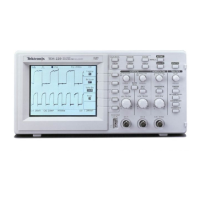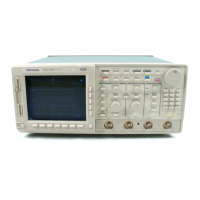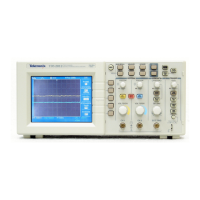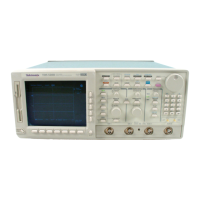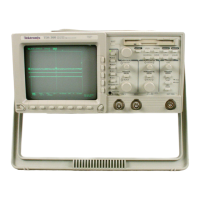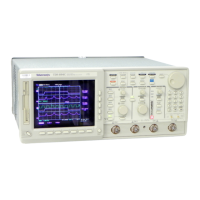TDS 420A, TDS 430A, TDS 460A & TDS 510A User Manual
3–91
Pulse Triggering (TDS 510A Only)
Pulse triggering can be very useful. For example, you might be testing a product
with a glitch in the power supply. The glitch appears once a day. So instead of
sitting by and waiting for it to appear, you can use pulse triggering to automati-
cally capture your data.
Figure 3–48 shows the pulse trigger readouts. Table 3–7 describes the choices for
pulse triggers.
Trigger Class = Runt
Figure 3–48: Pulse Trigger Readouts
Table 3–7: Pulse Trigger Definitions
Name Definition
Glitch positive Triggering occurs on positive spike widths less than the
specified glitch time.
Glitch negative Triggering occurs on negative spike widths less than the
specified glitch time.
Glitch either Triggering occurs on positive or negative widths less than
the specified glitch time.
Runt positive Triggering occurs on a positive pulse that crosses one
threshold going positive but fails to cross a second
threshold before recrossing the first going negative.
Runt negative Triggering occurs on a negative going pulse that crosses
one threshold going negative but fails to cross a second
threshold before recrossing the first going positive.
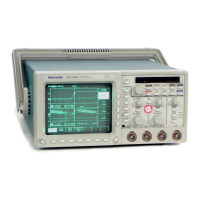
